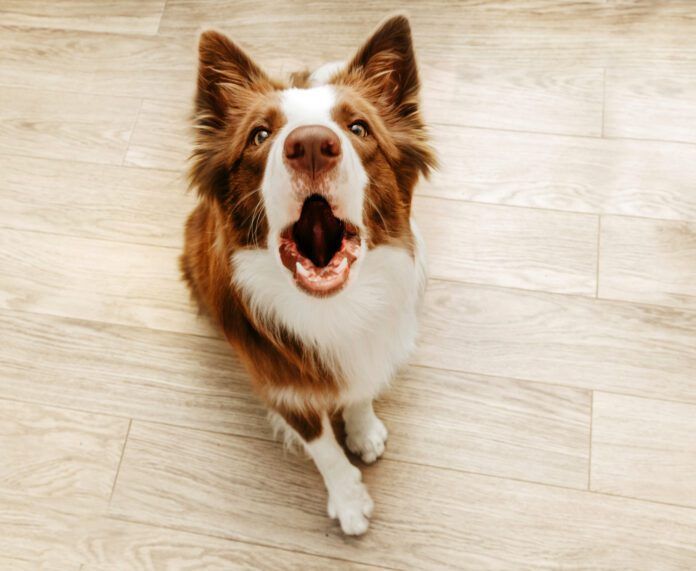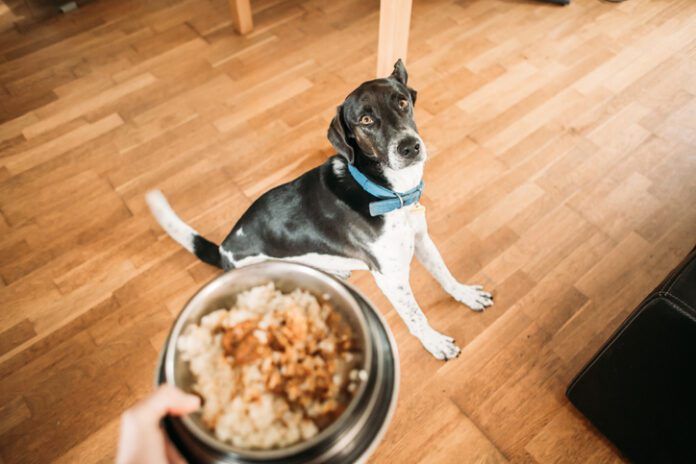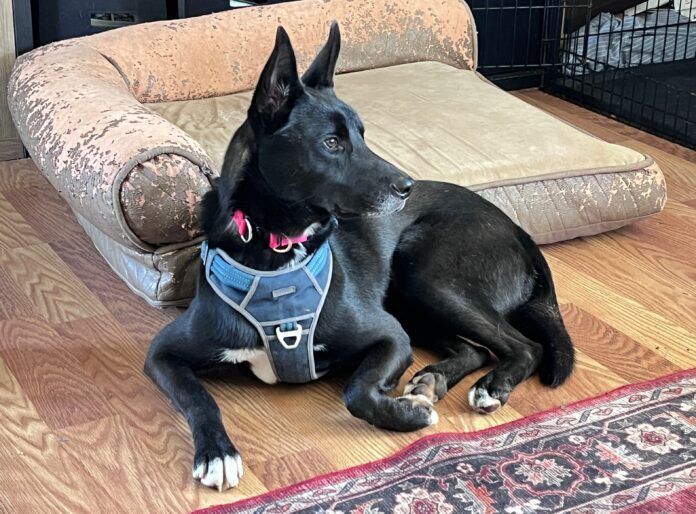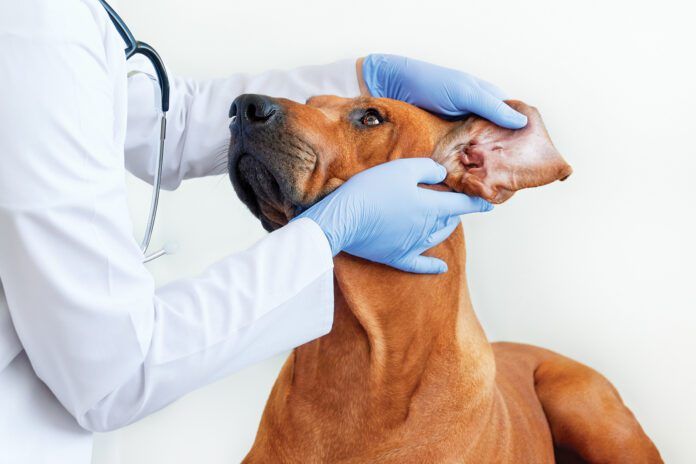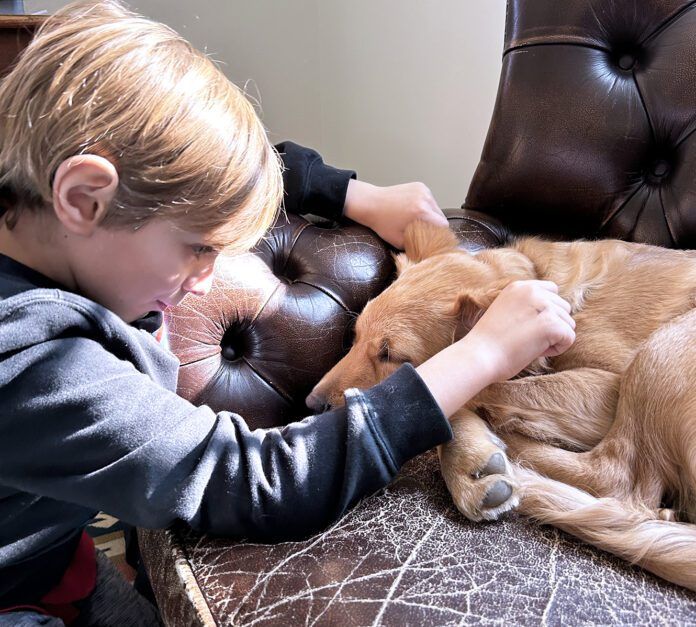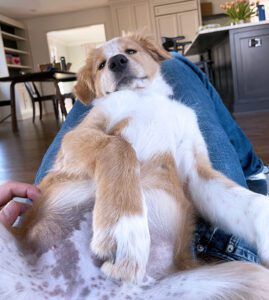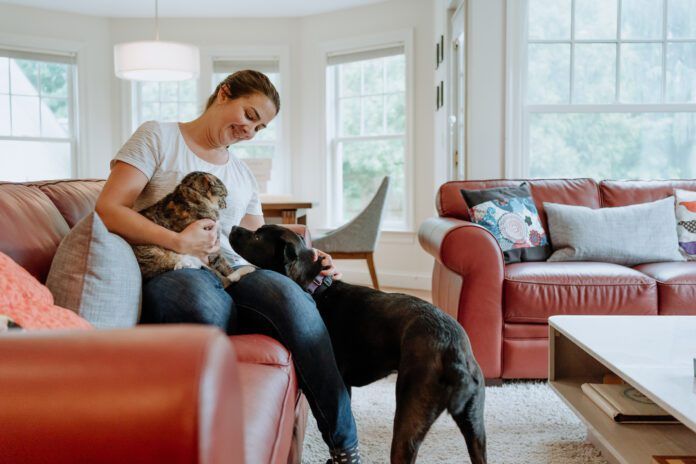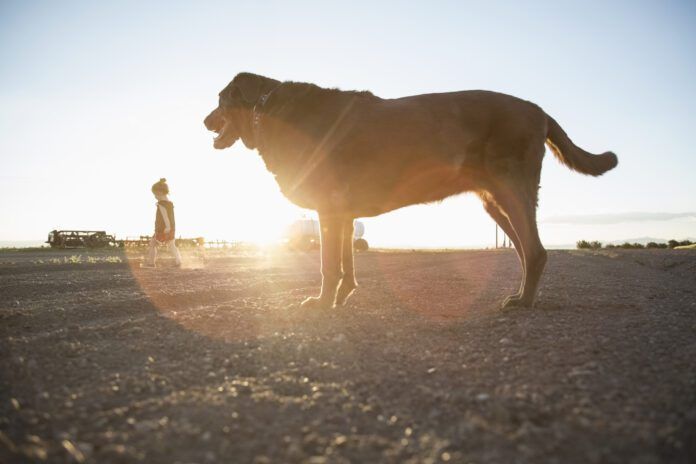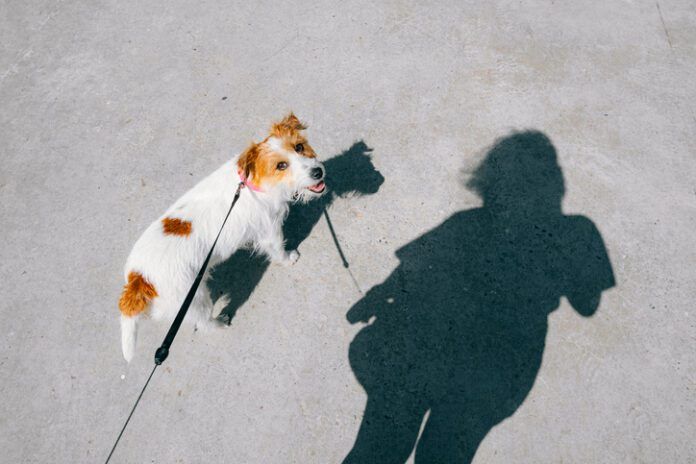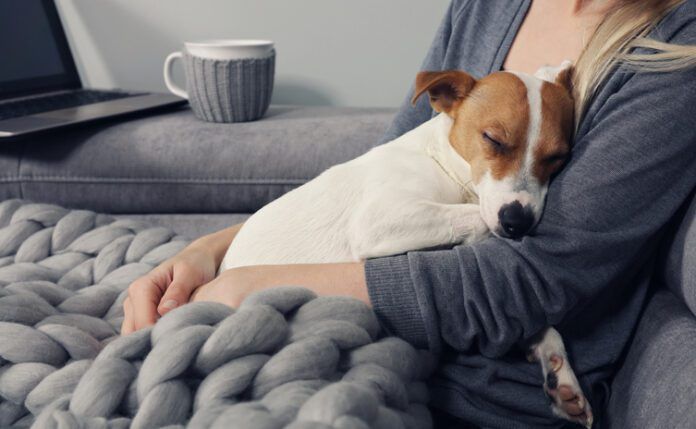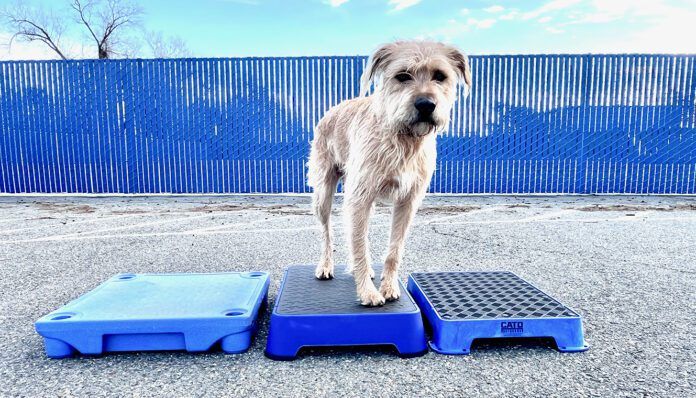All experts approach problems from the perspective of their education and experience. Given a dog with problematic behavior, a trainer may recommend equipment changes, behavior modification, and management steps. A veterinarian may prescribe medications that reduce anxiety and increase social behavior.
However, behavioral problems can result from neurochemical imbalances, medical conditions, past life experiences, current living conditions, and every combination of these. Veterinary behaviorists are uniquely positioned to use tools from both medicine and behavior science to most accurately diagnose and efficiently treat dogs with severely problematic behavior, such as aggression, self-mutilation, phobic or extremely fearful behavior, obsessive or compulsive behaviors, and severe separation anxiety.
One of the most valuable benefits of working with a veterinary behaviorist is their extensive knowledge of how psychotropic medications can further your dog’s behavior modification program. (By law, only veterinarians can prescribe or give you prescription medication for your dog.)
Some owners are resistant to using behavior medication for their dogs. Sometimes their resistance stems from working with a veterinarian who wasn’t experienced enough with behavior-modifying medications to tweak the dog’s prescriptions for the best results. The client’s dog may have been given medication that was too strong (“I don’t want my dog to be a zombie!”) or too weak (“It didn’t do anything!”).
This is sad, because often medication can make the most impactful contribution to improving the dog’s quality of life. In many cases, the right medication(s) can make a good training professional’s behavior-modification program much more successful, much sooner. If you are working with a skilled training professional, the addition of the right medication might make the visit with the behaviorist unnecessary!
But if neither your trainer nor your vet have answers to your dog’s challenging behavior – or when they are failing to work together to provide an all-encompassing treatment plan for your dog – a consultation with a veterinary behaviorist is well worth the cost.
Would it surprise you to learn that literally anyone can call himself or herself a behaviorist? The title means nothing. There are any number of dog trainers – qualified and unqualified, educated and uneducated – who call themselves behaviorists. However, here are a few titles that include “behaviorist” that actually do mean something:
-Veterinary behaviorist. Only licensed veterinarians who have been certified by the can use the title of veterinary behaviorist. The formal term is Diplomate, American College of Veterinary Behaviorists (DACVB). You can find veterinary behaviorists at dacvb.org/search/.
-There is another professional organization that has “veterinary” and “behavior” in its title – the American Veterinary Society of Animal Behavior (AVSAB) – but it does not provide certification of any kind. Veterinarians and persons holding a PhD in animal behavior or a related field may join this membership organization, but it does not confer certifications or presuppose a level of expertise in animal behavior. Behavior consultants who are members of AVSAB are listed on its website (avsab.org/directory/).
-Certified Applied Animal Behaviorist (CAAB) and Associate Certified Applied Animal Behaviorist (ACAAB). These are scientists, educators, or other animal professionals with advanced academic backgrounds in the principles of animal behavior. Certification for these titles is provided by the Animal Behavior Society, which describes its certificants this way: “A professional applied animal behaviorist has demonstrated expertise in the principles of animal behavior, in the research methods of animal behavior, in the application of animal behavior principles to applied behavior problems, and in the dissemination of knowledge about animal behavior through teaching and research.” You can find these professionals at animalbehaviorsociety.org/web/committees-applied-behavior-directory.php.
-Certified Dog Behavior Consultant (CDBC) and Certified Animal Behavior Consultant (CABC). These certifications are bestowed by the International Association of Animal Behavior Consultants (IAABC), which offers animal credentialing examinations for several animal species and specialties. Obtaining a CDBC credential indicates a superior level of knowledge as well as skill in practical application of behavior change principles following least intrusive, minimally aversive (LIMA)-based strategies.
What to Expect From a Veterinary Behaviorist Consultation

A particularly thorough medical and behavior history is the first prerequisite for any veterinary behaviorist consultation, with the behavior history being the longest and most detailed part of the intake form. When did the problematic behavior first start, how often does it happen, and how has it changed?
The behaviorist also needs to know what interventions have been tried and how the dog responded to those treatments. The intake form will also ask the owner, “What are your goals for your dog? What outcome do you hope for?”
If the problematic behavior is unlikely to be observed in a veterinary office setting, the owner will be asked to try to capture video of the dog while he’s displaying the troubling behavior. Video can often provide the most valuable clues to the causes or significant contributors to the dog’s behavior.
After reviewing all of the above, the veterinary behaviorist will then meet with the dog and owner in order to observe the dog’s behavior first hand (or at least via a video conference).
At the end of the first visit, the client is usually given some management strategies that can be implemented right away – especially if the dog’s behavior has the potential for endangering anyone.
Afterward, the veterinary behaviorist will prepare a comprehensive treatment plan for the dog’s owner, which is typically reviewed and discussed in a subsequent appointment. The plan may include a request for medical tests (or further medical tests) in order to diagnose or rule out medical contributors to the problematic behavior. Usually, it will also include recommendations for the owner to undertake behavior modification exercises under the guidance of a training professional working with or recommended by the veterinary behaviorist.
The treatment plan may also recommend the use of supportive therapies such as supplements, nutritional therapy, and/or prescription medications (when appropriate).
Because there are few veterinary behaviorists, it’s impossible for many dog owners to book an in-person consultation with one. That’s why most of these professionals also offer phone or video consultations with their clients’ veterinarians. Instead of seeing the dog and owner, they will review the veterinarian’s report of the dog’s issues and directly communicate with the dog’s veterinarian to offer suggestions for further medical testing, medication, and behavioral interventions.
Veterinary behaviorists are veterinarians who have achieved board certification in the specialty of veterinary behavior. Certification takes a minimum of three years of study and training after a candidate has obtained a veterinary graduate degree. The certifying board for this specialty is the American College of Veterinary Behaviorists (ACVB); certificants, who are known as Diplomates, may use the initials DACVB along with DVM after their names.
To gain board certification, candidates must complete at least one year of internship or primary care practice. They must also undertake additional behavior-specific training, which includes at least three years of case supervision by an established DACVB. They must also conduct original behavior research that earns publication in a peer-reviewed journal, author three formal case reports that are approved by a review committee of Diplomates, and pass a rigorous two-day board examination administered by the ACVB.
There are only about 95 DACVBs located throughout the world (though other countries also certify veterinary behaviorists).
Some veterinary behaviorists have a solo practice, where they provide clients with support and referrals to other training or medical professionals as necessary. Others work in group practices, where other staff veterinarians can provide any diagnostic tests that the veterinary behaviorist recommends and staff trainers will work with the client and the client’s dog on behavior modification exercises.
Sample Case History
We asked a veterinary behaviorist to describe a typical case to illustrate how these professionals draw on their medical and behavioral expertise differently than their vet or trainer peers. Chris Pachel, DVM, DACVB, CABC, owner of the Animal Behavior Clinic in Portland, Oregon, accommodated us with a description of one of his veterinarian-to-veterinarian consultations.
The patient was a 3-year-old, intact male Labrador who had perpetrated a number of troubling episodes of what was described as unpredictable and unprovoked aggression in his home. His humans were highly experienced dog owners who were active in dog sports and had other dogs in the home, including additional dogs who would sometimes stay with them in a casual boarding scenario.
While the patient was usually a social butterfly with an affable temperament, the owners described a number of incidents where he had suddenly behaved aggressively. Fortunately, they had three of these incidents captured on video, thanks to their home security system.
One incident, where the patient became aggressive with his male owner, occurred in the backyard of the home when other dogs were present. In another incident, the dog aggressed toward that man’s mother when she moved a chair that was three or four feet from the dog. In the third incident captured on video, the patient aggressed toward a visiting dog.
Since the patient was perfectly social and appropriate in between these incidents – even in situations that were identical to the conditions in which he showed aggression – the owners brought the dog to their vet. About six months prior to the first aggressive incident, the dog had slipped and fallen with his front legs splayed out in an unnatural position. His owners were concerned that he might be experiencing pain that caused him to lash out at others.
On physical exam, their vet did find some pain and prescribed pain medication. The dog’s pain went away, but the troubling behavior did not. So, with the clients’ approval, the veterinarian scheduled a consultation with Dr. Pachel.
“It’s always necessary to have someone provide a thorough physical examination, but it doesn’t have to be me,” Dr. Pachel explains. In this case, he discussed the results of the primary care veterinarian’s physical exam, neurologic exam, and notes regarding the dog’s response to pain medication; he also read the behavior history and viewed the owner’s video clips.
From early on, Dr. Pachel suspected a medical cause for the aggression. “What stood out to me was the inconsistent relationship between the antecedents (things that happened around the dog prior to the aggression) and the behavior,” Dr. Pachel says.
“Seeing the variability and expression of those aggressive behaviors, and understanding that the dog has been in identical situations hundreds of times without eliciting any aggression – the most notable thing about the incidents were how inconsistent they were. That increased my level of suspicion that something internal, not external, was driving the incidents. The inconsistency also made me think about potential causes that have a waxing and waning, variable expression, such as hormonal issues or endocrine- related disorders.”
Dr. Pachel first suggested that the dog’s vet run a comprehensive thyroid profile (laboratory test). Dogs whose bodies produce too much or too little thyroid often experience changes in behavior and coping skills. However, the test results were normal.
Next, he considered endocrine conditions that could have an intermittent influence, impacting the dog’s ability to respond to mild provocations and stress. He suggested testing the dog for Addison’s disease – which may have appeared to the dog’s primary care vet as a stretch. “The dog had never had an Addisonian crisis (collapse, lethargy, dehydration), his electrolytes were normal – there were none of the hints in his bloodwork that would make you want to run an ACTH stim test (a test that demonstrates the capacity of the dog’s adrenal glands to produce cortisol),” describes Dr. Pachel. “It was the waxing and waning nature of the aberrant behavior and lack of response to other treatments that led me in that direction.”
While he may have thought the test was a shot in the dark, when the results came back, the dog’s primary care vet was happy to report that the picture was now clear: The dog had Addison’s disease, a deficiency of the hormones that regulate electrolytes, blood pressure, hydration, metabolism, and … stress responses! Addison’s patients require lifelong supplementation of those hormones, but thankfully, with treatment, the dog’s troubling behaviors stopped.
Is it just marketing?
It bears repeating: Anyone can call themselves a behaviorist. The term doesn’t guarantee that they are educated or experienced with complex behavior problems. When hiring a dog trainer, we recommend you choose a behavior professional who is certified by and/or a member of one of the organizations we list here: whole-dog-journal.com/training/find-the-best-trainer-for-you-and-your-dog.
Any ethical behavior professional will explore your dog’s behavior with you, help with behavior modification if they can, and refer you to a veterinary behaviorist if they realize your dog’s issues are beyond their experience and capabilities, or if their efforts to help are not successful.


